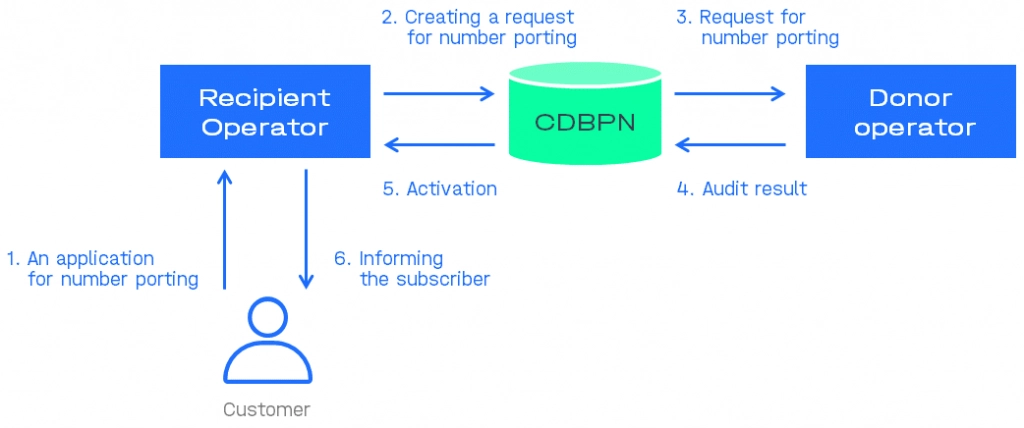Mobile Number Portability
The system for transferring subscriber numbers from one operator to another
Allows to organize the transition of subscribers between operators preserving the number they are used to and complying with territorial legislation.

Key benefits
The Mobile Number Portability system gives the subscriber freedom to choose a telecom operator retaining his/her mobile phone number. MNP manages the process of number porting, provides call routing, and also allows to return "departed numbers" and subscribers arrears.
- ability to cancel number portability (or erroneous portability)
- search and change the time of number porting
- porting numbers of the state customer
- overtaking arrears
- online monitoring of the status of applications throughout the entire length of the porting process
- keeping the subscriber informed
Business value
subscribers
growth of subscriber base due to easy entrance of new subscribers
compliance
with the legislation
churn rate
possible reduction of subscriber churn with timely response to the subscriber's intent to change the operator
automation
automating the process of data verification during number porting
optimization
cost optimization due to return of telephone number capacity
How it works?
- A customer contacts the telecom operator to which he plans to switch - the recipient operator.
- An employee of the telecom operator creates subscriber data in the billing system, from where the transfer of the client's number will be initiated. Through the Web-MNP interface the employee transmits customer data to the Central Database of Ported Numbers (CDBPN);
- The donor operator - the former telecom operator serving the customer - receives an application for number portability from the CDBPN. Information about all applications is available in the web interface of the MNP system. The donor operator checks the client's data, verifies if there are any outstanding bills and other conditions, then sends the result of the check to the CDBPN.
- The recipient operator receives a response from the donor operator through the CDBDP. Then, depending on the result, it activates a new subscriber or refuses the porting.
- The recipient operator informs the client about the result.
All basic number porting actions are performed in the MNP interface.

CSP initiating number return
There are cases of erroneous porting. In this case, an employee of the telecom operator initiating the return of the number, creates the data of the subscriber, whose number must be returned, in the billing system. Next, the system redirects the employee to the MNP web interface, where (s)he performs the basic actions to return the number.


